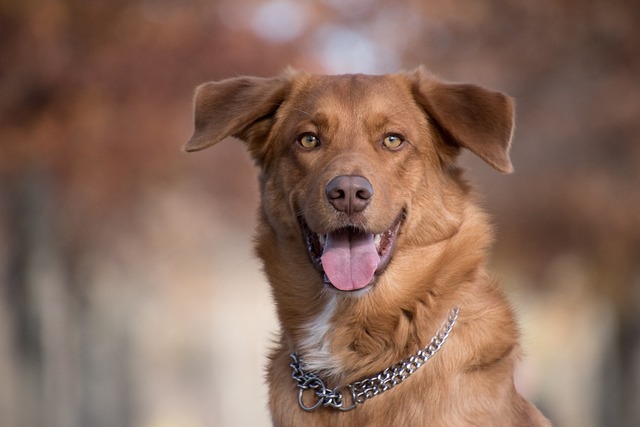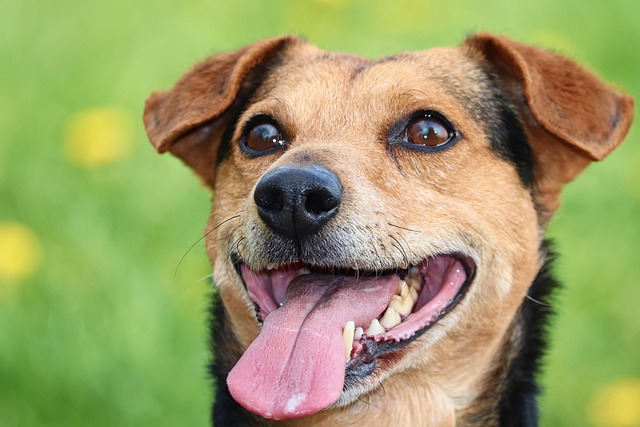
How to prevent dogs from engaging in aggressive behavior towards humans
When a gentle dog suddenly bares its teeth at a passerby or emits a warning growl when a family member approaches,
Training a young puppy to use a dog doorbell may seem like a challenging task, but as long as you master scientific methods and incorporate patience and love, you can help the puppy learn this skill with ease. Next, we will delve into how to help a young puppy get familiar with and use a dog doorbell in a gentle and effective way.
Before starting the formal training, the first step is to choose a suitable dog doorbell. There are various types of doorbells available on the market, such as bell-style doorbells that can be hung on the door handle and electronic induction doorbells. Bell-style doorbells allow the puppy to intuitively feel the connection between the sound and the action, while electronic induction doorbells are more sensitive and the sound can be adjusted. Whichever type you choose, make sure that the sound of the doorbell is not too harsh, so as not to startle the puppy. Install the doorbell in a place that the puppy can easily reach. It is generally recommended to install it near the door at a height level with the puppy's nose, making it easy for them to touch it in the future.
Establishing a good relationship of trust with the puppy is the foundation of the training. In the initial stage of training, don't rush to let the puppy come into contact with the doorbell. Instead, spend some time playing and interacting with them. Through gentle strokes and soft calls, let the puppy feel your care and a sense of security. When the puppy takes the initiative to approach you and wags its tail, it is a sign that they trust you. Starting the training at this time can often achieve twice the result with half the effort.
The first step of the training is to let the puppy get familiar with the sound of the doorbell. You can gently pull the doorbell to make a crisp sound, and then immediately give the puppy a delicious treat. At the same time, praise it in a gentle and excited tone, such as "Good baby!". Repeat this action, with an interval of a few minutes each time, so that the puppy gradually associates the sound of the doorbell with the delicious treat. This stage may take several days until the puppy looks at you excitedly as soon as it hears the doorbell ring, expecting the treat as a reward.
 Once the puppy has a positive reaction to the sound of the doorbell, you can guide it to touch the doorbell with its nose or paw. You can place a treat under the doorbell. When the puppy approaches the doorbell because it wants the treat, gently guide its nose or paw to touch the doorbell with your hand. As soon as the doorbell rings, immediately give it the treat and offer enthusiastic praise. If the puppy doesn't understand your guidance at first, don't be in a hurry or scold it. Instead, be patient and try several times, and give it confidence with encouraging eyes and a gentle tone. As the training progresses, the puppy will gradually understand that as long as it touches the doorbell, it can get a delicious treat and the owner's praise.
Once the puppy has a positive reaction to the sound of the doorbell, you can guide it to touch the doorbell with its nose or paw. You can place a treat under the doorbell. When the puppy approaches the doorbell because it wants the treat, gently guide its nose or paw to touch the doorbell with your hand. As soon as the doorbell rings, immediately give it the treat and offer enthusiastic praise. If the puppy doesn't understand your guidance at first, don't be in a hurry or scold it. Instead, be patient and try several times, and give it confidence with encouraging eyes and a gentle tone. As the training progresses, the puppy will gradually understand that as long as it touches the doorbell, it can get a delicious treat and the owner's praise.
After the puppy has initially mastered the skill of touching the doorbell, it's time to establish a connection between the doorbell and the action of going out. Every time you are about to take the puppy out for a walk or to relieve itself, first guide it to touch the doorbell, and then open the door and take it out. During this process, maintain consistent commands and actions. For example, after the puppy touches the doorbell, say "Let's go out" and then quickly open the door. At the beginning, the puppy may touch the doorbell just for the treat. As the number of repetitions increases, they will gradually realize that touching the doorbell is a signal to convey to the owner that "I want to go out".
During the training process, various problems are inevitable. Some puppies may be too timid to approach the doorbell, while others may be too lively and touch the doorbell randomly. For timid puppies, be more patient in guiding them. Use treats to slowly attract them to come closer and reduce their fear. For naughty puppies, when they touch the doorbell randomly, don't give them a reward. Instead, wait until they touch the doorbell at an appropriate time, such as when they are about to go out, and then give them a reward and praise. Through such positive reinforcement, let the puppy gradually understand the right time to use the doorbell.
Training does not happen overnight and requires a lot of time and effort from the owner. During the training process, every bit of progress made by the puppy is worth celebrating. Even a small action, such as touching the doorbell on its own for the first time, should be fully affirmed and rewarded. When the puppy occasionally forgets to use the doorbell or even shows wrong behavior, don't get angry or punish it. Instead, guide it again and help it correct its behavior with tolerance and patience.
As the training progresses, the puppy will become more and more proficient in using the dog doorbell. One day, when it stands at the door, gently touches the doorbell with its nose, and looks up at you with expectant eyes, as if saying "Master, I want to go out", you will feel a great sense of accomplishment. This way of communication established through patient training not only makes the life of raising a dog easier and more convenient but also further deepens the emotional bond between you and the puppy.
Training a young puppy to use a dog doorbell is a journey full of love and patience. In this process, you not only teach the puppy a practical skill but, more importantly, through daily companionship and guidance, the trust and tacit understanding between you will continue to be enhanced. Use scientific methods and warm love to help the puppy learn to use the dog doorbell and start a more harmonious and wonderful life with your pet.

When a gentle dog suddenly bares its teeth at a passerby or emits a warning growl when a family member approaches,

When the owner is looking forward to the dog sleeping peacefully in the airline box, but the dog whimpers, scratches, or avoids the airline box, every pet owner feels helpless and distressed.

When you finish a busy day and open the door, the dog rushes towards you like a small cannonball, jumps up enthusiastically and pounces on you.

When you carefully pick up the nail clippers and approach the dog, it suddenly bares its teeth, growls, and even tries to struggle and bite you.

When you happily reach out to hug your dear dog, but suddenly it bares its teeth, growls, or even bites you; or when a child in the family approaches to play

When you get up in the morning and see the "masterpiece" of the dog on the floor, or when you get home from work and are greeted by the pungent odor and the messy scene,